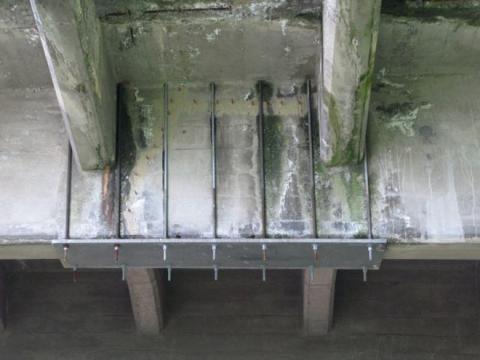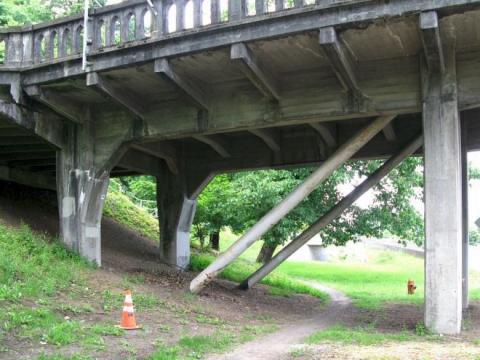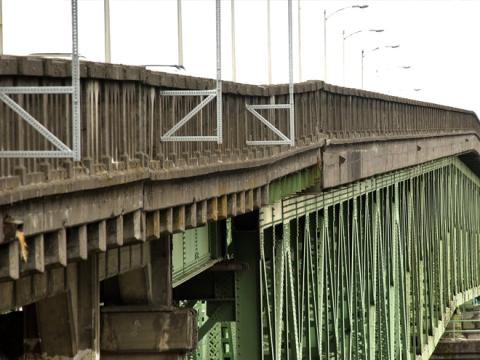In many ways, the design of the Sellwood Bridge was inadequate from the day it opened. Even for its time the bridge was narrow, having only two lanes, no shoulders or median, and one four foot sidewalk.



The New Sellwood Bridge
Work to replace the Sellwood began in 2006 as a planning effort to develop a community-supported solution to address the long-term transportation deficiencies posed by the deterioration of the bridge. As part of this work, Multnomah County prepared an Environmental Impact Statement (EIS) that summarized major environmental impacts, community concerns and considered alternative solutions.
A preferred alternative was selected in 2009, calling for a new bridge to be built on the same alignment. The new bridge would be 64-feet wide at its narrowest point, with two 12-foot travel lanes, two 12-foot shared use sidewalks, and two 6.5-foot bike lanes/emergency shoulders.
At their January 27, 2011 meeting, the Multnomah Board of County Commissioners agreed with the recommendation of the project committees and approved a steel deck arch bridge type for the replacement Sellwood Bridge.
The bridge was designed by T.Y. Lin International (San Francisco) and built by Slayden/Sundt, a joint venture of Slayden Construction Group (Stayton, Oregon) and Sundt Construction (Tempe, Arizona).
Work on the new bridge began in summer 2012 . The main truss spans of the original Sellwood Bridge continued to see service as part of a detour bridge set on new piers during the construction of the replacement bridge. When the new bridge was opened, the steel and concrete of the old Sellwood Bridge were recycled, continuing the cycle of re-use that started when parts of the old Burnside Bridge were used to build the Sellwood Bridge in 1925.
Previous: Construction and Dedication | Back to Start: Sellwood Bridge History